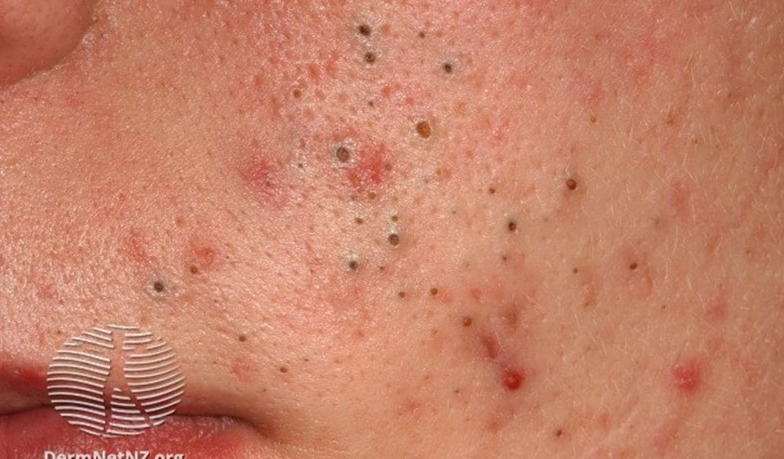BOURSESSENEGAL – Bumps on skin can appear for various reasons, often causing concern or curiosity. These skin irregularities range from harmless to more serious conditions. Identifying the type of bump and understanding its causes can help you decide whether treatment is necessary. In this comprehensive guide, we will explore the different types of bumps, their potential causes, and the best treatment options available.
What Are Bumps on Skin?
Definition and Common Characteristics
Bumps on skin refer to raised areas that can vary in size, shape, color, and texture. They may feel firm or soft and can appear anywhere on the body. Often, these bumps arise due to factors such as infections, allergic reactions, or skin conditions.
Importance of Identifying Bumps
Recognizing the type of bump and its associated symptoms is crucial. Some bumps may indicate an underlying health issue, while others might simply be cosmetic concerns. Early identification can lead to timely treatment, improving both health and appearance.
Types of Bumps on Skin
1. Acne
Overview: Acne is one of the most common causes of bumps on skin, especially during adolescence.
Characteristics: These bumps can manifest as whiteheads, blackheads, or cysts. They typically occur on the face, back, and shoulders.
Causes: Hormonal changes, excess oil production, and bacteria can trigger acne.
2. Hives
Overview: Hives are raised, itchy welts that can appear suddenly.
Characteristics: They can vary in size and often change shape. Hives can occur anywhere on the body.
Causes: Allergic reactions to foods, medications, or insect stings usually cause hives. Stress and temperature changes can also trigger them.
3. Warts
Overview: Warts are benign growths caused by the human papillomavirus (HPV).
Characteristics: They usually appear as rough, raised bumps and can occur on any part of the body.
Causes: HPV enters the skin through small cuts or breaks, leading to wart formation.
4. Moles
Overview: Moles are common skin growths that can be flat or raised.
Characteristics: They vary in color, size, and shape and can appear anywhere on the body.
Causes: Moles develop due to a combination of genetic factors and sun exposure.
5. Cysts
Overview: Cysts are closed sacs filled with fluid or semi-solid material.
Characteristics: They can be soft or firm and vary in size. Common types include sebaceous cysts and epidermoid cysts.
Causes: Blocked glands or hair follicles often lead to cyst formation.
6. Skin Tags
Overview: Skin tags are small, benign growths that hang off the skin.
Characteristics: They usually appear in skin folds and can be flesh-colored or slightly darker.
Causes: Skin tags often develop due to friction and are more common in older adults or those with certain health conditions.
When to Seek Medical Attention
Signs That Require Professional Evaluation
While many bumps on skin are harmless, some may warrant medical attention. Consider seeing a doctor if:
- The bump changes in size, shape, or color.
- It becomes painful or tender.
- You experience itching, bleeding, or discharge.
- You have a fever or other systemic symptoms.
Importance of Early Diagnosis
Early diagnosis is crucial for conditions that require treatment. Certain types of skin bumps can indicate more serious health issues, including skin cancer. Regular check-ups can help ensure any abnormalities are addressed promptly.
Home Remedies for Managing Bumps on Skin
1. Warm Compresses
Using a warm compress can help reduce inflammation and promote drainage in cysts or boils. Simply soak a clean cloth in warm water, wring it out, and apply it to the affected area for 15-20 minutes several times a day.
2. Over-the-Counter Treatments
For acne, warts, or minor skin irritations, over-the-counter creams and treatments can be effective. Look for products containing benzoyl peroxide or salicylic acid for acne, and wart removers for warts.
3. Moisturizers
Keeping your skin well-moisturized can help prevent dryness and irritation, which may lead to more bumps. Choose a gentle, fragrance-free moisturizer to maintain healthy skin.
4. Avoiding Irritants
If you suspect that a bump is due to an allergic reaction or irritation, try to identify and avoid the trigger. This may include certain foods, skincare products, or fabrics.
Medical Treatments for Bumps on Skin
1. Prescription Medications
If home remedies aren’t effective, a healthcare provider may prescribe topical or oral medications. For severe acne, medications like antibiotics or retinoids may be necessary.
2. Surgical Options
For persistent cysts or warts, minor surgical procedures may be required. Your doctor can remove these bumps safely, providing relief and preventing recurrence.
3. Dermatological Procedures
Treatments such as cryotherapy (freezing), laser therapy, or chemical peels can help address specific types of bumps, especially for cosmetic concerns.
Prevention Tips
1. Maintain Good Hygiene
Keeping your skin clean can prevent many types of bumps. Wash your face twice daily and shower regularly to remove dirt and oil.
2. Protect Your Skin
Use sunscreen daily to protect your skin from harmful UV rays. This can help prevent the development of moles and reduce the risk of skin cancer.
3. Be Mindful of Allergens
Identify and avoid allergens that trigger skin reactions. Keeping a journal of your diet and skin reactions can help pinpoint problem areas.
4. Regular Skin Checks
Regularly examine your skin for new bumps or changes in existing ones. Early detection can lead to timely intervention and better outcomes.
Conclusion: Managing Bumps on Skin Effectively
Bumps on skin can vary widely in cause and significance. Understanding the types, causes, and treatments available empowers you to manage your skin health proactively. If you notice any concerning changes, consult a healthcare provider for guidance.
By prioritizing skin health and following preventive measures, you can maintain clear and healthy skin. Remember, knowledge is your best tool in addressing skin concerns, so stay informed and take action when needed.
This detailed guide aims to inform readers about bumps on skin while engaging them effectively. If you have any specific requests or need further adjustments, feel free to let me know
REFERENCE : https://www.health.com/



